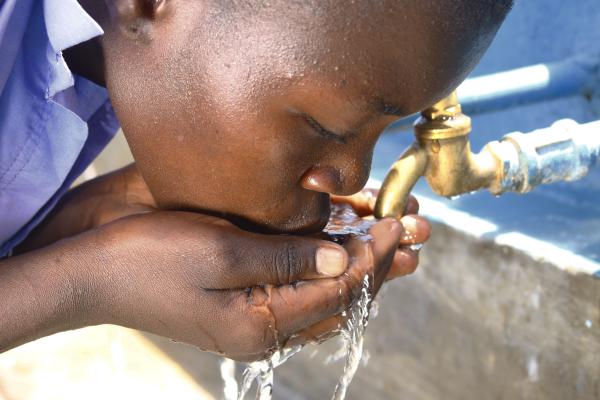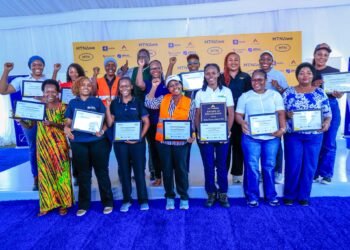President Yoweri Kaguta Museveni, the NRM presidential flag-bearer, on Thursday entered Ankole from Kigezi and kicked off his sub-regional campaign activities in Isingiro District, delivering a message centered on job creation, household wealth, and economic transformation.
He was joined by his daughter, Mrs. Patience Rwabwogo Museveni, who supported him in mobilizing communities throughout the district.
Speaking to a massive crowd at the Isingiro District Headquarters, Museveni reflected on Uganda’s journey from conflict to stability. He thanked God for the peace the country enjoys, recalling times when he passed through the same area armed during the liberation struggles of 1972, 1979, and 1985.
“Today we gather in peace, well-dressed, united, and joyful,” he said. “I thank God and the NRM for returning peace to our nation.”
Museveni outlined the NRM’s role in stabilizing the country and improving infrastructure. He mentioned key completed roads—including the Mbarara–Kikagate–Isingiro and Kachumbala–Kabale–Ntungamo roads—and reaffirmed the government’s resolve to improve other priority routes such as the Kikagate–Kitwe–Namahimba and Kabingo–Rwekubo–Rugaaga–Endizi–Magabi–Rakai–Mutukula corridors, which he said are vital for expanding markets and easing farmers’ access to buyers.
He then shifted focus to the country’s next economic agenda, stressing that national development must now be complemented by deliberate efforts to grow household wealth. He noted that even in developed areas such as Kampala, many people remain poor because they do not participate in income-generating activities.
Museveni emphasized four areas that drive wealth creation: commercial agriculture, manufacturing, the service industry, and ICT. He reminded residents that the Four-Acre Model—first introduced in the 1996 Manifesto—remains an effective way for small farmers to increase earnings. Under this model, one acre is dedicated to coffee, another to fruits, a third to pasture for dairy cows, and the last to food crops, with additional small-scale ventures like poultry, piggery, or aquaculture.
He also clarified that sustainable employment comes from these productive sectors, not from government offices. Uganda has only about 480,000 public service jobs for a population of 50 million, he said, urging the population to look to the private sector. He cited Mbale Industrial Park, which now hosts over 75 factories employing thousands, and reported that new factories nationwide have created 1.3 million jobs—nearly triple the public sector’s capacity.
Museveni reaffirmed the role of the Parish Development Model (PDM) and Emyooga in lifting families out of poverty but condemned officials who demand land titles before releasing PDM funds. “This is completely wrong,” he said. “The PDM guidelines don’t require land titles or collateral. All you need is a viable enterprise.” He encouraged residents to report any officials soliciting bribes or manipulating recruitment processes.
He urged banana farmers in the district to embrace irrigation and modern farming practices to improve productivity and tap into larger markets. The President later handed NRM flags to parliamentary aspirants, LC V leaders, councillors, and other candidates in Isingiro, formally endorsing them ahead of the elections.
Speaker of Parliament Rt. Hon. Anita Annet Among, who also serves as the party’s Second National Vice Chairperson, applauded Isingiro for its discipline, accountability, and unwavering support for the NRM. She highlighted the launch of a workers’ SACCO and ongoing government water supply projects benefiting both local communities and refugees.
State Minister for Agriculture Hon. Lt. Col. Bright Rwamirama pledged strong support for the President, while NRM District Chairperson Lt. Moses Mushabe reminded Museveni that Isingiro delivered 94% of the vote in 2021 and promised even higher numbers in 2026.
Mushabe detailed the district’s rapid population and administrative expansion—now comprising 30 sub-counties and town councils, 131 parishes, 901 villages, and a population of 635,077—and increasing demands for services, especially due to hosting refugees. He reported that the district has received UGX 47.1 billion under PDM, supporting 41,131 households, and UGX 3.35 billion under Emyooga, benefiting 89 SACCOs with 31,901 members.
He also outlined progress in the education sector, which includes 197 government and 543 private primary schools, alongside 21 government and 75 private secondary schools. Seven Seed Secondary Schools are being constructed to address gaps in underserved parishes. Through the Presidential Industrial Skilling Hubs, 1,226 youths have been trained, with 247 currently undergoing training.
Isingiro’s health system includes four HCIVs and 26 HCIIIs, though eight sub-counties still lack government health facilities. Government plans to upgrade existing units and construct new HCIIIs in Kabingo and Kagarama. Water access currently stands at 51%, supported by major piped systems, gravity-flow schemes, protected springs, borehole rehabilitation, and major projects like the Isingiro Piped Water and Sanitation System.
Significant investments have also been made in water for production—large valley tanks, irrigation systems, dam rehabilitation, and the Kabuyanda Multipurpose Dam, which will serve 32,000 farmers across 38 villages. The district is now fully connected to the national power grid, energizing homes, enterprises, and public institutions.
The event drew NRM CEC members, MPs, cultural and religious leaders, and thousands of supporters as Museveni officially launched the Ankole phase of his 2026 campaign.
















